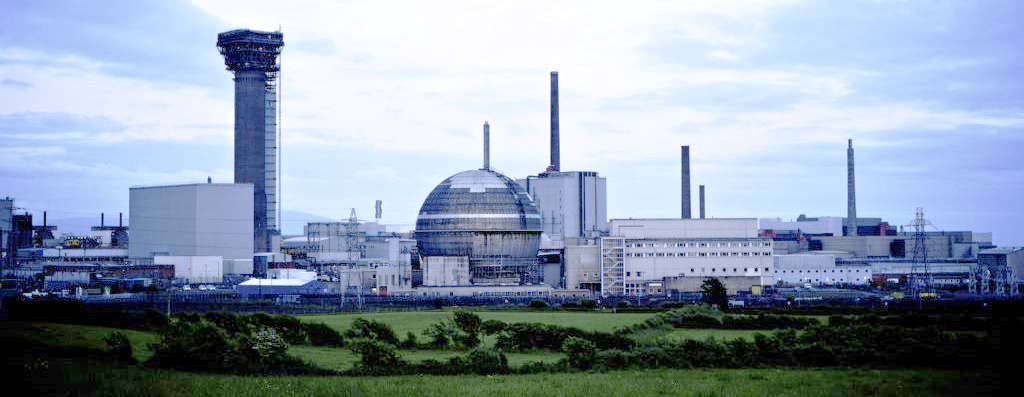Construction management plan: definition, phases and other details

Introduction
While the exact definition may differ depending on a number of factors, it’s safe to say that a general construction management plan is a collection of files and reports that provide a detailed explanation of a project in question, including its resources, budget, requirements, activities, and schedule. The process of creating a construction management plan is called a construction planning process.
A construction management plan is a matter of immense importance for any kind of construction project, especially the ones that are bigger and more complex than the average. A detailed plan can drastically increase the chances of a project turning out exactly as planned.
The amount of information within a construction management plan is directly connected to the chance of some sort of issue appearing in the middle of a project’s realization. It is highly recommended to have a rock-solid and detailed construction plan even before the construction phase.
Documents included in a construction management plan
Understandably enough, a construction management plan is not composed of just a few documents. In fact, it’s a massive collection of all kinds of files and plans, and the amount of those grows exponentially with the overall size of a project.
Here are five general types of documents that you’ll have to attach to your construction management plan:
- WBS (Work Breakdown Structure) – it’s a specific document that splits the entirety of your work activities (related to a single project) into sections for easier management. It can also be used to visualize some of the deliverables that are crucial to your project.
- Visual documentation (renders, plans, etc.) – this is all about visual documents that can be shared with different parties (local officials, stakeholders, and so on), including project renderings, construction specifications, etc.
- Project’s scope – this one is a complete list of all your project-related features, goals, deadlines, costs, and functions. It can also be used to connect specific benefits to each of the milestones and represent the general needs of a project as a whole.
- Risk management plans – both the assessment of various risks and the way you’re going to resolve them are big parts of this document type. The sheer scope of a regular construction project implies that the potential risks can also be massive and destructive if you aren’t able to take preventive measures on time.
- Communication plans – defining your goals, long-term objectives and short-term targets is the main purpose of a communication plan, along with figuring out the methods that you’ll be using to efficiently deliver all of that information to different parties involved (since ineffective communication can heavily influence the outcome of your project, and not in a good way).
Types of construction management plans
A construction management plan as a whole is supposed to start off with the results of a construction process in mind. This requires the ability to visualize the entire process of bringing a project to life, as well as the finished construction. The results of such a visualization are then often compared with the list of objectives to cross off the parts that are not required in the first place.
This is why construction management plans are often quite complex – you have to constantly line up the objective list with the visual plan while keeping the wishes of a client in mind. Generally speaking, it’s a lengthy process of comparing and adjusting your plans until all of the parts of a construction plan line up with each other.
As we’ve mentioned before, the definition of a construction management plan tends to vary depending on the end goal of such a plan. From this perspective, let’s point out three general types of a construction management plan:
- A general construction management plan, most commonly used to describe the entirety of a construction project from the very first planning stages to the project evaluation that is conducted after the construction has been completed.
- A somewhat different type of construction management plan that is more often used by contractors specifically to explain how parts of the construction process would be completed (often includes a lot of details about costs and task schedules).
- Another type of construction management plan is focused on the impact of the construction as a process on its surrounding area (often has a fixed format and layout, depending on the municipality that is concerned with the construction process in question).
We can also go into a bit more detail about each of these three types of construction management plans.
A regular construction management plan
Often called a “business plan” of sorts, this type of construction management plan should be capable of fully answering most of the questions about a specific project. While it is not strictly necessary, the need for such a plan grows dramatically with the increase of the project’s scope, that’s why it is more or less a necessity for the majority of construction projects.
The contents of such a plan vary greatly depending on many project-related factors, but it’s safe to say that the sections below should be in most of the construction management plans, if not all of them:
- Description of a project in question
- Design documents of a project, or the basic explanation of the design ideas
- Business benefits that this project is supposed to bring
- Some details about the construction process and its parts
- How the project would be evaluated after the construction is complete
- How both the bids and the contract are going to work, and so on.
Despite the fact that this type of construction management plan is produced either by the client themselves or on their behalf most of the time, it’s not uncommon for a contractor to also participate in the construction plan creation.
For example, the contractor’s information about costs or schedule might appear in this plan as a reference or an addendum – if both parties are working under the “Design-Build-Operate” agreement.
A detail-heavy construction management plan
A different type of construction management plan is often prepared when there’s a need to provide more details about the costs or the schedule of a project in question. This kind of plan would include projected cost breakdowns, individual task timings, information about materials and/or technologies that are going to be used, and more.
Due to the specific nature of this type of plan, it’s not uncommon for many different types of construction softwares to assist in creating such a plan. Some of the tasks that can be streamlined using a standalone or cloud-based software include the computer-aided design (CAD) of both 3D and 2D drawings, construction accounting, construction-related project management, various estimates, and so on.
This type of software can also be used to exchange information between different parties, especially when it comes to more complex projects. The inclusion of building information modeling (BIM) software into the mix allows the creation of even more detailed construction management plans with increased efficiency.
A construction management plan for the local government entities
In some specific cases, there’s another construction management plan that needs to be created and provided to the local government entity for approval. These cases are mostly connected with demolition and excavation operations, as well as with the nature and the size of a project. Some of the specific topics that should be mentioned in this plan are:
- Operating hours
- Traffic management and how it may affect the surrounding area
- The expected level of noise and vibrations within and around the construction site
- The overall security on the construction site and public safety matters
- Explanation about the re-use of both materials and waste
- Management of stormwater, dust, sediment, and air
Since it is more of an official government-related matter, it often comes with a specific period of approval, as well as the requirement to create (and submit) this entire plan in advance. Fortunately enough, the aforementioned project management software can help with sorting out some of the information required for this specific construction management plan.
Four parts of a construction management plan
Since we are dealing with a relatively complicated topic, a construction management plan includes four important parts that are supposed to serve as a baseline for any decent construction management plan.
- Analyze the scope of a project in question
Serving as one of the most important parts of your construction management plan, scope analysis is supposed to give you an understanding of the correct size of a project. That way, you’ll be able to understand the exact amount of resources that would be required for the project to reach its completion. Some of the variables that you’re supposed to keep in mind at this step are the project’s goals, objectives, tasks, features, deadlines, finances, etc.
- Resource acquiring
Resource schedule is another important document that should be prepared once you’ve successfully figured out the scope of a project. Although, the mentioned is more about the workforce and less about actual resources.
It is possible to get a significant headstart on the construction project by figuring out who to hire and how to allocate tasks between hired teams. This can also prevent the entire project from having any last-minute bottlenecks and have as close to zero delays as possible.
- Budgeting and phase-based design
A lot of the hardships of dealing with a massively complicated project can be either reduced or outright solved by splitting a general plan into several smaller tasks, which also work for construction projects. With smaller project phases it is a lot easier to track progress, perform budgeting more accurately and manage the entire project as a whole.
Both budgeting and phase-based design are extremely important for the project manager to have a semi-accurate total revenue estimate, and for other managers to analyze the feasibility of a project in general.
- Figuring out the dependencies
Another topic of massive importance when it comes to construction management plans is all about tasks and coordination. Construction projects often operate with various cross-functional teams, and coordinating those teams is an important job to ensure the project’s definite success. This is why dependencies between different tasks should be as clear as possible, and each team should know about their own tasks (and how their job is connected to other teams’ tasks).
While most of the plans tend to get adjusted for a number of reasons, these four are the essentials for any construction management plan, helping construction managers with the planning and execution of a project in general.
Five phases of a construction management plan
It’s not uncommon for the entire construction management to start off their work as early as possible – as early as the pre-planning phase (sometimes called a design concept phase). That way, the entire construction management team would be able to confirm that the client’s vision of a project is realistic in the current budget, and form a construction management plan based on that information.
After that, as soon as the project gets to the building phase, the construction management plan is used to assess the quality of the job, and understand if it meets the estimated budget or not, although some adaptability is possible in these cases. While it is possible to prepare for a lot of obvious risks and accidents, it’s almost impossible to think of everything beforehand – hence the adaptability limit.
If we want to note down the major phases in a regular construction plan, it’s possible to narrow the list down to five of them:
- Design stage. Surprisingly enough, one of the most important phases of a construction management plan. This is the time when the limits of a project as a whole are defined – be it about budget, time, or the end result. It includes a lot of discussion with the client to understand all of the above goals. Also this stage specifically sometimes involves a file called PID, or Project Initiation Document.
- Schedules and planning. This is where the bulk of planning is done, based on the limits above. At this point, it’s time to establish guidelines, create schedules, predict risks, and so on. It’s also the phase when estimates are made (often with the help of construction management software) – about time, costs, insurance, material quantities, and much more. All of the communication channels between different teams are also tested at this point.
- Proposals and procurement. Two of the biggest parts of phase three are RFPs and CMP. RFP is a Request for Proposal – anything that’s connected with bids and tenders. CMP is a Construction Management Procurement – a process of acquiring all of the resources that are needed for the project to be completed successfully (both the actual resources and the workforce in the form of subcontractors)
- Construction. The construction phase is not just about the process itself, it also includes various means of monitoring and reporting progress, as well as communication between teams, construction site safety measures, compliance to various regulations, risk management, and more.
- Post-construction. The project’s delivery and assessment of the current results, including the comparison with the estimates. Sometimes includes other post-construction operations, but generally ends on presenting a completion report to the client/owner.
Construction management plan: recommendations
The construction management plan is a complicated enough topic on its own, involving a lot of nuances and details that should be taken into the account. A single overlooked factor can easily become the project’s biggest liability in the future, due to the way different parts of a construction management plan are connected with each other and depend on each other to work properly.
However, the understanding of a construction management plan as a whole is a good way to prevent most of the problematic accidents from happening – this is what all of the information above is for. We can also provide some additional recommendations in the field that may or may not help your plan specifically, but work as helpful general advice in the long run:
- Don’t hesitate to try and use various project management or resource management softwares, they have a lot of advantages that can make your job significantly easier, even one single advantage of being able to keep an eye on every construction-related operation at once is an impressive feat.
- Invest in project data safety and backup software. Additional expenses are nothing compared with losing the entirety of your project’s data in the middle of a construction process.
- Make sure that communication and collaboration are as easy and effortless as possible. For example, you can keep the project-related documents within the cloud storage, so that they can be accessed from anywhere; not just from your working station.
- Both task management and time management are incredibly important to any construction project as a whole, and the correct planning regarding the entirety of a project is necessary for it all to turn out the way it’s supposed to be. When attempting to meet deadlines, avoid over-utilizing resources and try to work around delays, so that the project can still be completed within a reasonable timeline.
- It’s not uncommon for a construction management plan to be updated based on the possibility of improvement. Some people say that a good construction management plan is always supposed to be “work-in-progress” – constantly changing and adapting to circumstances.
- The experience of a project manager or a construction manager matters. Past experiences can serve as great lessons to keep in mind to improve your construction management skills as a whole.
Conclusion
A construction management plan is a deep and complicated topic, which involves a lot of explanation to understand it correctly. Fortunately enough, there’s a lot of various resources all over the Internet that can act as your guideline in understanding all of the caveats and advantages of a construction management plan.
This article attempts to collect and explain some of the most important parts of construction management plans and how they work in general; we hope our efforts in that regard were successful.
Unlock seamless BIM collaboration — request your demo today


